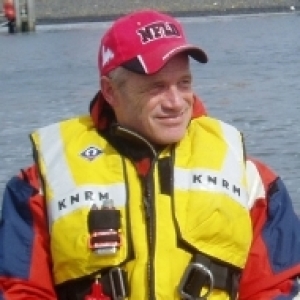Midline Buoy
Building hundreds of oil and gas producing platforms on the North Sea is one thing, but how do you transport all this oil and gas to the shore and finally to your gas station? Of course this is done by sub-sea pipelines. These pipelines are laying on the bottom and after all these years of drilling, building and producing, it is obvious that there are thousands of kilometers live pipelines on the sea floor. Big platforms like North Everest are spiders in a pipeline web. Oil companies have three main concerns: the safety of their personnel, the safety of the installation and the environment. Pipelines are very vulnerable but how do you anchor out a cranebarge so close to a platform without posing a threat for the pipelines on the bottom of the sea? It is like trying to put two spiderwebs on top of each other without touching. Anchor wires crossing pipelines are therefore unavoidable. But we can prevent this contact by means of midline buoys. At the exact spot where the anchor wire crosses a pipeline, we connect this big buoy with a vertical wire on the (almost) horizontal anchor wire. It gives the anchor wire 25 tonnes of buoyancy or uplift (as you can see written on the buoy) and prevents the wire and pipeline touching each other. A time consuming and rather complicated operation.
- 0
- 0
- Canon PowerShot A620
- f/4.0
- 10mm

Comments
Sign in or get an account to comment.


